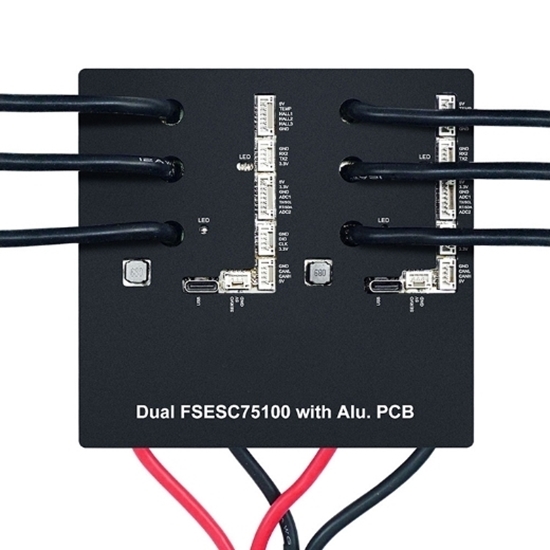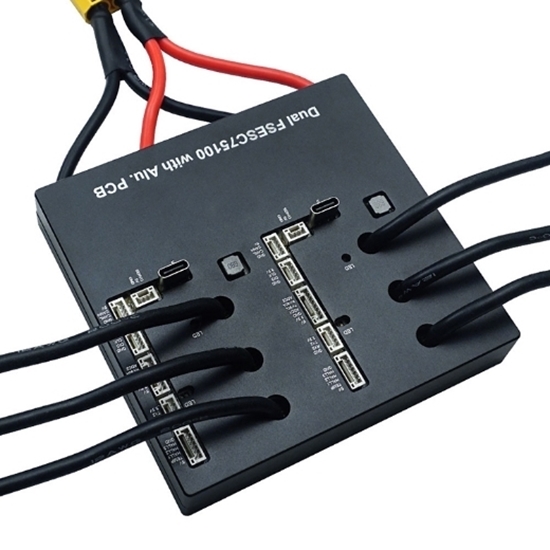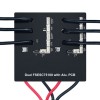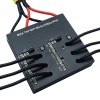



- Stock: In Stock
- Model: RDDLZ-ESC-200-420D
- Weight: 1.00
- SKU: RDDLZ-ESC-200-420D
Available Options
Buy 4-20S electronic speed controller for dual brushless motor. The 100A/200A ESC controller can turn on when you turn your car on and activates when it detects that you may lose control, mainly used for RC cars, bicycles, aircraft, helicopters, airplanes, boats and quadcopters.
Specifications
- Model: RDDLZ-VA-750D-N-100
- Voltage: 14-84V (4-20S safe, voltage spikes must not exceed 84V)
- Firmware upgrade: Support USB online firmware upgrade
- Current: Single/dual max. continuous current 100A/200A, single/dual max. current 120A/240A (duration depends on external heat dissipation)
- Control communication mode: Support PPM, ADC, NRF, UART
- Braking capacity: Regenerative braking
- Control mode: Support current, duty cycle, speed, position control mode
- BEC: 5V/1.5A output, 5V/1.5A output for external electronic equipment
- Supported sensors: ABI, HALL, AS5047, AS5048A
- Communication port: USB, CAN, UART, SPI, IIC
- EPRM: 150000
- Motor cable: 12 AWG
- Power cable: 12 AWG
- Size: 103mmx107mmx18.5mm
Dimension (Unit: mm)
Wiring diagram
Tips: ESC Controller vs. BLDC Motor Driver
They are usually the same. The main difference between the different solutions is how they commutate and what interfaces they use. Usually, they use a fairly poor trapezoidal commutation with zero cross detection. Some of the better ESC or BLDC controllers use trapezoidal commutation with flux integration, which usually works better. Others can also use flux-integrated sensing or encoders for some FOC-like commutation. This is usually suitable for low-speed torque but requires more processing so higher speeds may be problematic and therefore is not usually used for multi-rotor drones. The cheaper ones will have servo PWM inputs, and some of the more advanced ones may use something like a CAN bus, but that's not very common yet.
